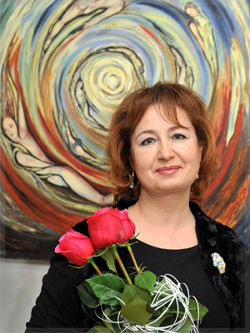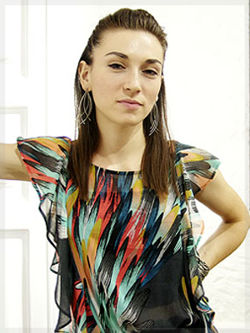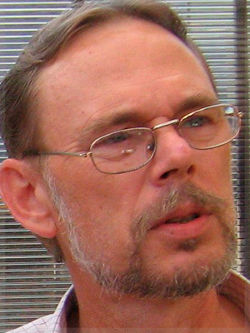


Paintings from the bottom of the soul

If Dadaism produced a committed sociocritical style of painting in Germany at the beginning of the 20th century, artists in France transformed the Dadaist principle of the illogical, the irrational and the random in their painting in order to penetrate the realms of the unconscious. They too no longer believed in visible reality and were in search of an all-encompassing reality, a «super-reality». Like Expressionism, Surealism did not remain restricted to visual art, but found literary form as an «attitude towards reality»
Sigmund Freud’s psychoanalysis gave the Surrealists important impulses. Freud’s investigations into the interpretation of dreams had shown that most of our mind, like an iceberg, lies beneath the surface in the depths of the unconscious and that the thinking, feeling and action of man is decisively informed by unconscious powers. The artists now began to explore this hitherto unfamiliar terrain. As the unconscious becomes apparent above all in dreams and trance states, the dream world became extremely important to the Surrealists. «I believe in the coming dissolution of the apparently contradictory states of dream and reality, in a kind of absolute - if one will - super-reality», declared the author Andre Breton, thus assuming responsibility for the name of the movement.

The conviction that alongside the visible world there exist repressed areas of experience which can be called forth in dream images of hallucinatory phenomena and pictorial suggestions, linked an international movement of artists - visual artists and writers - in spirit. Their outstanding painter-figures were the Spaniard Salvador Dali and Joan Miro, the German Max Ernst, the Belgian Rene Magritte and the Mexican Frida Kahlo, to name but a few. In very different ways, they explored the realms of the Surreal artistically, but they were always concerned with «replacing the real outside world with the reality of the mind» While one faction dealt with the dream world and the objective world in a narrative sense, conjuring up an absurd universe woven through with crazed ideas, other artists resorted to a creative process not governed by the conscious mind. The painters Salvador Dali and Giorgio de Chirico tried to break through the consciousness-governed thought processes with a tension laden, irritating world of imagery, painting highly unreal pictorial situations in a realistic manner. De Chirico named his works, in which supernatural forces seem to prevail, «pittura metafisica» - «metaphysical painting». The Surrealists received crucial stimulation from the enigmatic magic-realist paintings that de Chirico painted as early as the first decade of the century.
Dali’s paintings look like dream visions dragged into the daylight, full of inexplicable signs and ciphers, which touch the viewer at an emotional level beyond intelligible logic and any rational view of the world. Salvador Dali, who claimed to be a paintery photographer of dreams, is part of the group of the so-called «illusionistic» or «veristic» Surrealists. The alienation of the objective world opens up access to deeper levels of consciousness, to a reality behind the visible reality.

The Belgian artist Rene Magritte also undertook an analysis of reality. But the reverse principle applied to him: he did not wish to call forth those familiar things repressed into the unconscious with visionary, traumatic pictorial worlds, but to reveal the strange in the familiar. «One has», the painter said, «all too often the custom of bringing the strange back to the familiar with a mind-game» He wanted to achieve precisely the reverse of this with subtle paintings: «I try to replace the familiar in the strange». His The Realm of Lights only ceases to be irritating at the second glance: over a nocturnal landscape, and a house with its lights on, there beams a bright summer sky. Day and night are so plausibly connected that the contradiction has the appearance of authenticity. While the painting puts forward a curious claim, it makes the viewer ask why reality is as it is, and not different.
Under the influence of Surrealism, Magritte began to demonstrate the differences between art and reality with a penetrating intensity. Drawing on a rich source of ideas - for example his famous depiction of a pipe beneath which he wrote «Ceci n’est pas use pipe - This is not a pipe» (but only the picture of a pipe), he wanted to prompt a thought process in the viewer, at the end of which his understanding of the world would have changed. For Magritte, painting was primarily an «art of thinking». With his confusing pictures, the painter called the relationship between appearance and reality, between painting and depiction, into the consciousness - an idea, incidentally, that was picked up once again by the artists of the 60s, when Jasper Johns called a painting of the American flag, Is it a flag or is it a painting?

The estrangement of the objective world, whether in the surreal dream-paintings of Dali or in Magritte’s think-paintings, is only one of many possibilities of penetrating deeper layers of consciousness. The painters saw another in leaving everything up to chance. Above all Max Ernst made use of this principle. One of the most experimental of the Surrealists, he included such unpredictable techniques as frontage, grattage or decalcomania in his paintings. They allowed him to create abstract structures which at first represent nothing at all, but, like cloud formations, encourage us to see things in them. Ernst often took his inspiration from structures that arose at random, out of which he then allowed his motifs to emerge. This procedure is not dissimilar to the «Rohrschach test» used by psychologists: here too the objective interpretation of a non-figurative ink blot is supposed to tell us something about thoughts and feelings concealed in the unconscious.
Another, not dissimilar way of eliminating the consciousness as far as possible from the painting process is so-called scripture automatique, automatic writing, in which the painters allowed their ideas and brush-stokers to move as if in a trance. This creative process, not governed by the consciousness, seemed to the Surrealists to be a possible way to bring paintings unfiltered up from the depths of the unconscious and on the canvas or the paper. This technique was taken up again in the 40s and 50s by the painters of Informel and was taken further by Jackson Pollock in his action painting.
The «automatically» written figurations are documentary evidence of psychological dispositions and at the same time a field of associations for the viewer.

The works of the Spanish artist Joan Miro should also be seen as playgrounds of the imagination, although they are based on compositional considerations. Influenced by Catalan folk art in his later works Miro developed poetic, symbolic abbreviations of suggestive form and color, which conceal a wealth of meanings. His paintings hover between figuration and abstraction, the flowing curves of his lines, little stars, circles and suns prompt fantasy and dreaming. The works are full of poetry and wit; they live off the colorfulness and the vitality of the lines. The picture elements seem to communicate with one another, to dance with one another. In a certain sense Miro’s works are line Kandinsky’s early abstract paintings. Miro’s works are also designed to «set the viewer’s soul vibrating».
The Surrealist exploration of mental depths was necessarily highly individualistic. A few exceptions apart, the Surrealists did not directly deal with political events in Europe - National Socialism in Germany, Fascism in Spain and Italy, the Second World War. Their political attitudes were manifested in rejection: in turning inwards one may be seen to be critically turning away from a world that is quite deliberately destroying itself. The war and National Socialist «art-cleansing actions» had abruptly interrupted artistic development, particularly in Germany. The exhibition «Degenerate Art», shown by the National Socialists in Munich in 1937, was a prelude to an infamous campaign of hatred against all modern, avant-garde artists who did not follow the prettily-colored pseudo-realism of National Socialist artistic doctrine. Works by the most important contemporary artists were banned from the museums, destroyed or sold abroad. The defamed artists were forbidden to paint and some of them were persecuted. This Sometimes life-threatening situation forced many to emigrate. As many artists went to America, New York in the 40s became an artistic focus and meeting-point. Many Surrealists met up here (again). Although Surrealism was already past its peak at the beginning of the 40s, it still provided inestimable impulses to the development of art immediately after the war.

Today surrealism is also a very popular theme in Art.
Many modern artists seeking inspiration from the old masters, such as Gyuri Lohmuller, bringing in his works something special and personal.
Someone working in new genres, but remains true to the style of surrealism like Romanian Artist Rimbu Iulian.
In ART.Biz you can find excellent artists with their lovely Surrealistic Artworks.
We Help Buy Art online!



